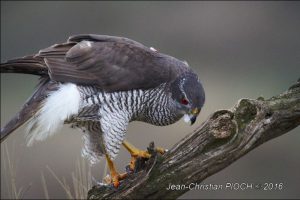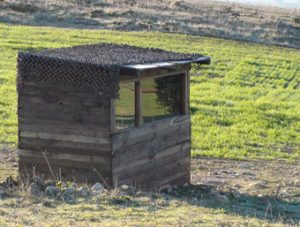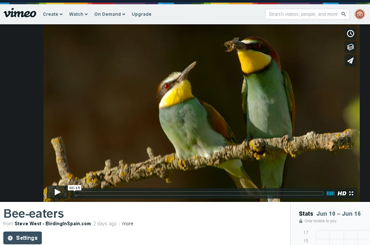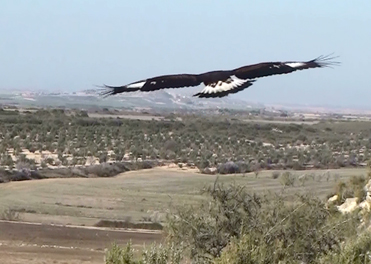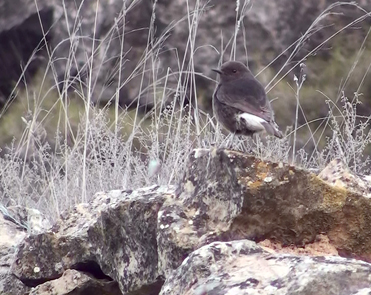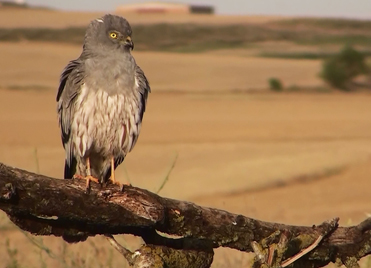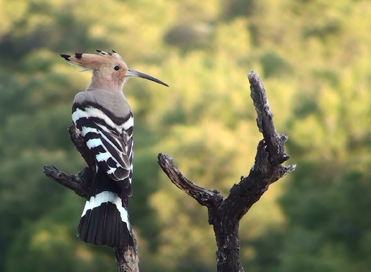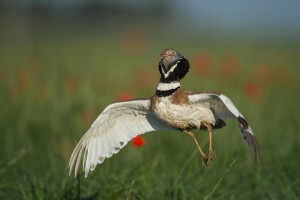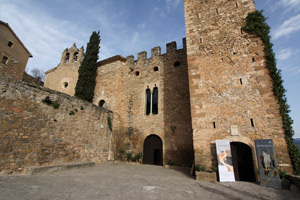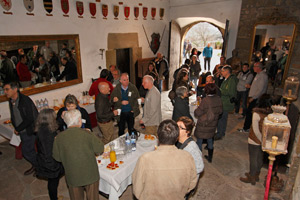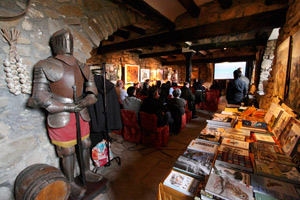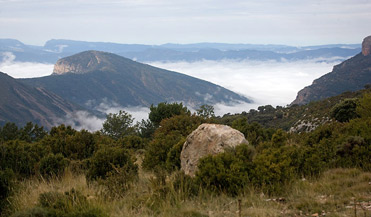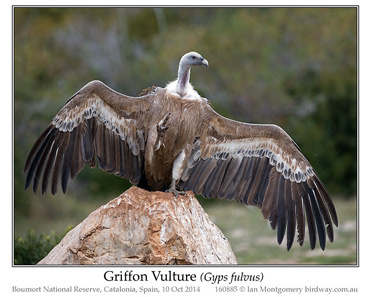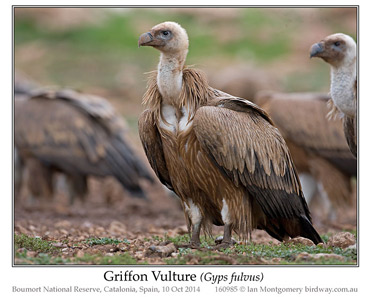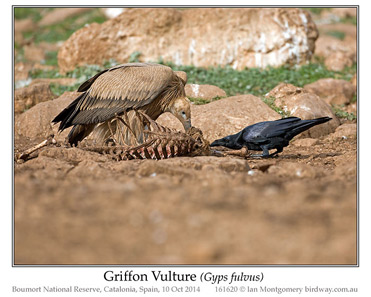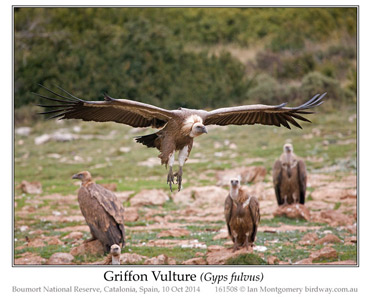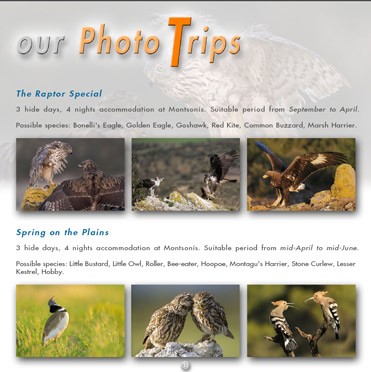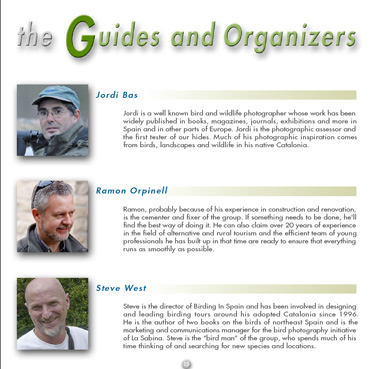Here is the second part of Ian Montgomery’s report on his recent trip with us to photograph raptors from our hides.
Now, at last, here is the one that I wanted to photograph above all else when in the Pyrenees: the Lammergeier, or Bearded Vulture.
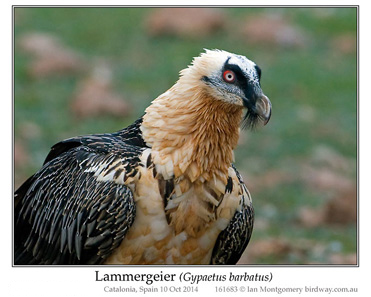
As with other species that have featured in the bird of the week such as the Black Woodpecker and Cream-coloured Courser, my interest or perhaps obsession was stimulated by my Petersen et al. Field Guide to the Birds of Britain and Europe in the early 1960s. Unlike the woodpecker and the coursers, the European vultures were represented not on the coloured plates but in monochrome drawings. If anything, that made them more mysterious and elusive though two of them came spectacularly to life in 1963 when I saw Griffon and Egyptian Vultures during a family holiday in the Pyrenees. The Lammergeier, the mythical bone-breaker seemed destined to remain just that, as I knew it was very rare in Europe, extinct in the Alps, and found only over the highest mountain ranges. Even the name seemed straight out of Wagner’s Ring Cycle along with the Valkyries.
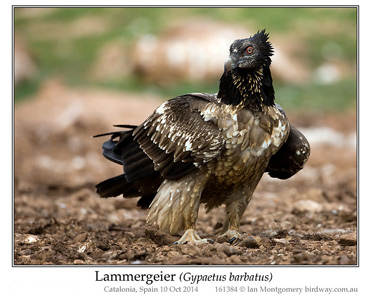
I had been warned by the reserve rangers that the Lammergeiers would appear, if at all, in the afternoon after the Griffons had had their fill and I also knew that they were shy, would initially cruise over the area without landing and could easily be put off by the movement of a large telephoto lens. So the suspense was great, and it was a thrill when the first immature bird landed some distance away just before midday. They kept on the fringes and it wasn’t until about 2:30pm they came close enough for decent photos. The bird in the second and third photo is an older immature bird – they take six or seven years to mature – and the feathers of the breast and legs are getting paler. It also has the red eye-ring of the adult.
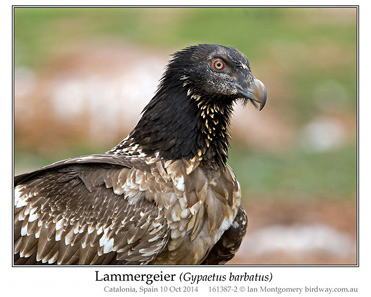
In flight, fourth photo, they look quite different to other vultures with their back-swept rather pointed wings and long paddle-shaped tail. The thick plumage on the crown and neck sets them apart from typical vultures too, and when perched they hold their bodies in a horizontal eagle-like stance, presumably to keep their tails off the ground.
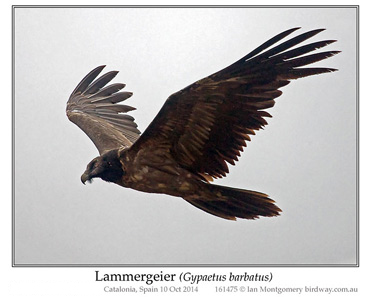
Their shape plus the whitish head of the adult is quite distinctive so it was an exciting moment when I saw the first one soaring in the distance over the mountain range that overlooked the feeding station. Much later, they started checking out the feeding area without landing. I was too wary of alerting them by movement so I took the fourth photo of an adult in flight much later.
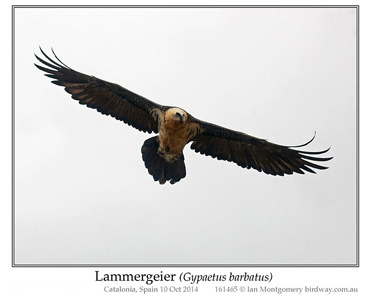
Eventually, just before 3pm, the first adult landed, though like the juveniles, the adults stayed on the fringes as well and it wasn’t until 4:30pm that they came closer pick over the remains of the food carcasses and the real photography began.
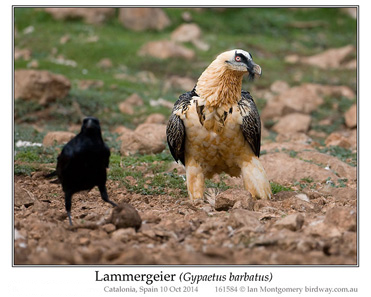
The black bird on the left of the fifth photo is a Common Raven and it seems to be imitating the stance of the larger bird and saying ‘I’m a champion too’. It’s much closer to the camera which makes it look larger than it actually is. Thirteen seconds later the Lammergeier took flight right over the Raven’s head – it had to duck – as if to say ‘we’ll see who’s boss’, and the relative proportions are more obvious. The wing-span – to 280cm/110in – is similar to that of Griffon and Cinereous Vultures, but the tail makes it much longer – to 125cm/49in. Females are heavier than males, to 7kg/15lb, but both sexes are lighter than the other vultures.
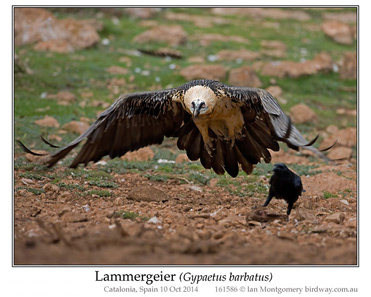
The Lammergeiers wait until the others have finished because their food of choice is bones and bone marrow. In fact these make up 85% of the diet making them unique among birds and probably also vertebrates. The one in the sixth photo has found the favourite morsel, the digits of a cloven-hoof herbivore such as sheep and goats. Smaller bones ones are swallowed whole, larger ones – up to 4kg in weight – are dropped onto regularly used rocky areas called ossuaries to smash the bones. The usual pattern of the birds here was to scout around for suitable food, carry it off and then return perhaps 20 minutes later. They’re called ‘quebrando huesos’ (breaking bones) in Spanish. They’ll also take live prey such as tortoises, which get the same treatment. Legend has it that the Greek playwright Aeschylus was killed around 456 BC by an eagle – clearly a Lammergeier – dropping a tortoise on his bald head, mistaking it for a rock.
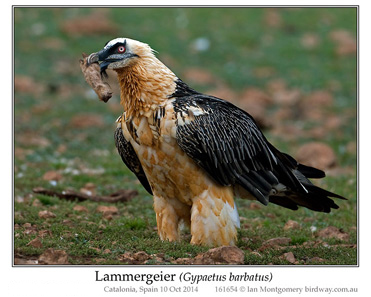
Conservation efforts have seen the Pyrenean population grow from 75 pairs in 1993 to 125 pairs in 2008 and the species has been successfully re-introduced to the Alps. It also occurs in eastern Africa, South Africa and Central Asia. Estimates of the global population range from 2000 to 10,000 individuals. Until recently, it was not considered globally threatened until recent declines outside Europe and it is now classified as near threatened. The greatest concern is the veterinary use of the anti-inflammatory and pain-killing drug Diclosfenac. Highly toxic to vultures, causing kidney failure, it has been solely responsible for the 99% decline in vulture populations in India, where it is now banned.
Horrifyingly, this drug has recently been approved for veterinary use in Spain and Italy. This insanity jeopardises the wonderful conservation efforts being carried out. BirdLife International has rallied to the cause, see http://www.birdlife.org/worldwide/news/vultures-africa-and-europe-could-face-extinction-within-our-lifetime-warn, and funds are being raised here https://www.justgiving.com/stop-vulture-poisoning-now/.
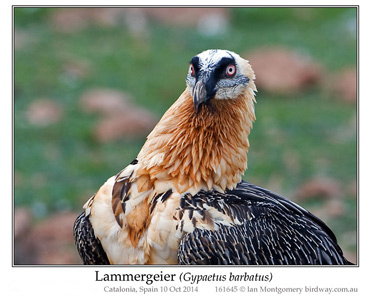
I’m going to donate. If we think that because there are no vultures in Australia, it’s someone else’s problem, it’s not unfortunately quite so simple. There is recent evidence that Diclofenac is toxic to Aquila eagles too. That includes the Wedge-tailed Eagle and this drug is approved for veterinary use here (e.g. ‘Voltaren’ for horses) and widely prescribed for human use. Studies have shown that it increases the risk of strokes in humans http://www.abc.net.au/news/2010-09-14/study-links-voltaren-to-strokes/2260424. Photographing Lammergeiers is a personal missió complerta (Catalan for misión completa). A much more important mission accomplished will be the global banning of this completely unnecessary and dangerous drug – there are safe alternatives.

